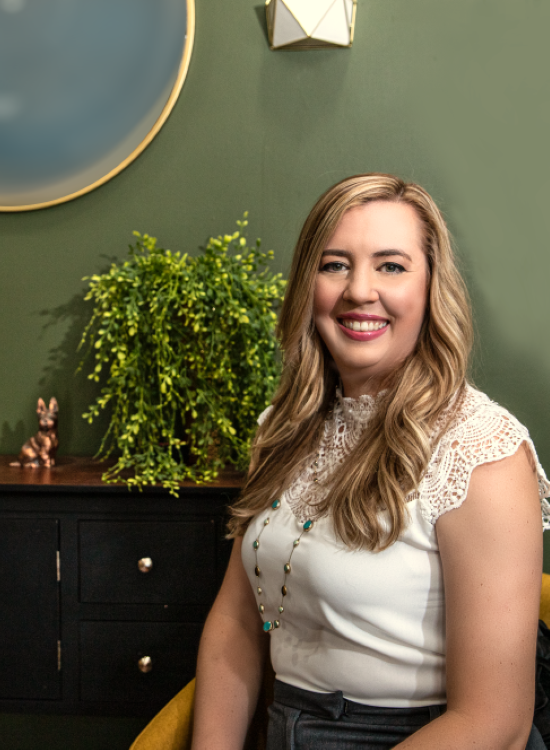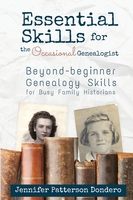The importance of siblings is a topic that can be discussed for any genealogical problem but sometimes it may be the best or only way to research a difficult female ancestor.
Your female ancestor may not have participated in society in a way that created lasting records. Women at the extremes of society have some of the best records available.
Women very involved in social activities or social work may appear in records of those groups or in local histories. Women who defied female norms were likely to appear in court for breaking some law (this could be suffragettes or prostitutes or anything in-between, don't forget there are differences in norms and laws at different points in history).
This also applies to a certain degree if her husband was at one end of the social spectrum. A wife may be a paragon of female virtues (for the time) but she may need to apply to civil or religious authorities for help if her husband doesn't provide for the family.
This could be applying for money for food or schooling. It could also be taking advantage of a law that prevents all the family's assets (think not just a house but kitchen utensils, bedding, etc.) from being seized if the husband is in debt or owes taxes.
Imagine women at the two extremes as either end of a gray scale going from white, through black, and back to white.
That black hole in the middle is the difficult female ancestor. Her behavior moves her one way or the other towards the light where you can finally "see" her through the records she left. But what about that black hole?
The more experienced genealogist will look for information about the wife through her children. Unfortunately, the women in the darkest parts of the grayscale often remain in the shadows in the next generation, as well. This is when siblings become so important.
When you get stuck finding the parents of a female ancestor, don't forget her siblings. If you know of "aunts" and "uncles" start by determining who they are. They may be siblings of the husband, no relation, or only cousins but you have to start by determining the relationship.
You might be so lucky as to know the names of siblings of your mystery woman.
I first formally learned to use this technique from The Sleuth Book for Genealogists by Emily Anne Croom. This is more advanced than her beginner guide, Unpuzzling Your Past, but still extremely approachable.
If you're really ready to move to the intermediate level, you should read and study Mastering Genealogical Proof by Thomas W. Jones (this link is to the Kindle edition, I recommend getting the print edition, also available from NGS, ngsgenealogy.com, if Amazon doesn't have it). I find the print edition easier to do the exercises. You may like to have the Kindle edition to read on the go.
These books are great to use at home but lectures showing case studies will really help you understand this technique. You should also read genealogy journals but journal articles will benefit you more once you understand this technique so start with a how-to article, book, or lecture.
Once you have identified and researched the siblings, make sure you are familiar with sound genealogical research before racing off to identify the parents in records. Records are prone to errors but sound genealogical research can often overcome even the worst problems.
Learn more about the Genealogical Proof Standard (GPS) to help make sure you aren't researching someone else's family after "solving" a difficult or complicated problem. Mastering Genealogical Proof mentioned in the previous section will give you exercises to help you practice this and other essential skills for genealogical problem-solving.
Whether you are looking for the parents of a female ancestor or just looking to learn more about her, don't skip the siblings in a rush to add more generations to your family tree.
What's your favorite technique for finding a maiden name or learning about a female ancestor who is hard to research? Leave a comment.
How Do You Find a Woman's Maiden Name?
A Grayscale of Social Interaction
There are lots of suggestions for identifying records about your female ancestor but sometimes she just didn't create records.Your female ancestor may not have participated in society in a way that created lasting records. Women at the extremes of society have some of the best records available.
Women very involved in social activities or social work may appear in records of those groups or in local histories. Women who defied female norms were likely to appear in court for breaking some law (this could be suffragettes or prostitutes or anything in-between, don't forget there are differences in norms and laws at different points in history).
This also applies to a certain degree if her husband was at one end of the social spectrum. A wife may be a paragon of female virtues (for the time) but she may need to apply to civil or religious authorities for help if her husband doesn't provide for the family.
This could be applying for money for food or schooling. It could also be taking advantage of a law that prevents all the family's assets (think not just a house but kitchen utensils, bedding, etc.) from being seized if the husband is in debt or owes taxes.
Imagine women at the two extremes as either end of a gray scale going from white, through black, and back to white.
That black hole in the middle is the difficult female ancestor. Her behavior moves her one way or the other towards the light where you can finally "see" her through the records she left. But what about that black hole?
Female Ancestors Lost in the Black Hole
Some inexperienced genealogists get stuck looking for records created by their ancestor or about their ancestor and nothing else. When looking for a wife, you may find information about her through her husband, but what if you don't?The more experienced genealogist will look for information about the wife through her children. Unfortunately, the women in the darkest parts of the grayscale often remain in the shadows in the next generation, as well. This is when siblings become so important.
Why Siblings?
We all know it but while researching do you actively remember that your ancestor's (full) siblings have the exact same pedigree as your ancestor? This is the only relationship where this happens and you should take full advantage of it.When you get stuck finding the parents of a female ancestor, don't forget her siblings. If you know of "aunts" and "uncles" start by determining who they are. They may be siblings of the husband, no relation, or only cousins but you have to start by determining the relationship.
You might be so lucky as to know the names of siblings of your mystery woman.
A Proven Methodology
If you don't have clues to any siblings, start paying more attention to who your woman's known family interacted with. This technique goes by several names---collateral research (researching collateral relatives), cluster research (researching a cluster of interacting people), and the popular term today, the "FAN Principal" or FAN club (Friends, Associates, and Neighbors), a term made popular by Elizabeth Shown Mills, CGSM.How to Learn More
All of these names refer to the same technique so learn more about them through online articles, attending lectures, and reading books and journals (don't overlook your local library for "how-to" genealogy books, core methodology hasn't changed with the Internet, record access has).I first formally learned to use this technique from The Sleuth Book for Genealogists by Emily Anne Croom. This is more advanced than her beginner guide, Unpuzzling Your Past, but still extremely approachable.
If you're really ready to move to the intermediate level, you should read and study Mastering Genealogical Proof by Thomas W. Jones (this link is to the Kindle edition, I recommend getting the print edition, also available from NGS, ngsgenealogy.com, if Amazon doesn't have it). I find the print edition easier to do the exercises. You may like to have the Kindle edition to read on the go.
These books are great to use at home but lectures showing case studies will really help you understand this technique. You should also read genealogy journals but journal articles will benefit you more once you understand this technique so start with a how-to article, book, or lecture.
Keep Going, Use the GPS
Once you have at least one sibling you have a whole new set of research possibilities. All the records that didn't provide the parents of your mystery woman can now be checked for the parents of the sibling. Plus you can try and identify more siblings starting from your mystery woman or the identified sibling.Once you have identified and researched the siblings, make sure you are familiar with sound genealogical research before racing off to identify the parents in records. Records are prone to errors but sound genealogical research can often overcome even the worst problems.
Learn more about the Genealogical Proof Standard (GPS) to help make sure you aren't researching someone else's family after "solving" a difficult or complicated problem. Mastering Genealogical Proof mentioned in the previous section will give you exercises to help you practice this and other essential skills for genealogical problem-solving.
What if Parents Aren't Your Goal?
If your issue isn't the parents of a female ancestor but really learning about her (i.e. biographical details), siblings may still be useful. As much as siblings differ from each other, they are the most likely to be similar to your mystery woman. Take advantage of families with lots of siblings and learn about as many of them as you can to increase the chance of learning about your female ancestor.Summary
Here are the steps you should have tried to solve your difficult problem involving a female ancestor.- Find records about her
- Find records about her husband
- Try records about her children
- Identify her siblings
- Use cluster/collateral research/the FAN principal
- Find records about her siblings
- Use the GPS
Whether you are looking for the parents of a female ancestor or just looking to learn more about her, don't skip the siblings in a rush to add more generations to your family tree.
What's your favorite technique for finding a maiden name or learning about a female ancestor who is hard to research? Leave a comment.











